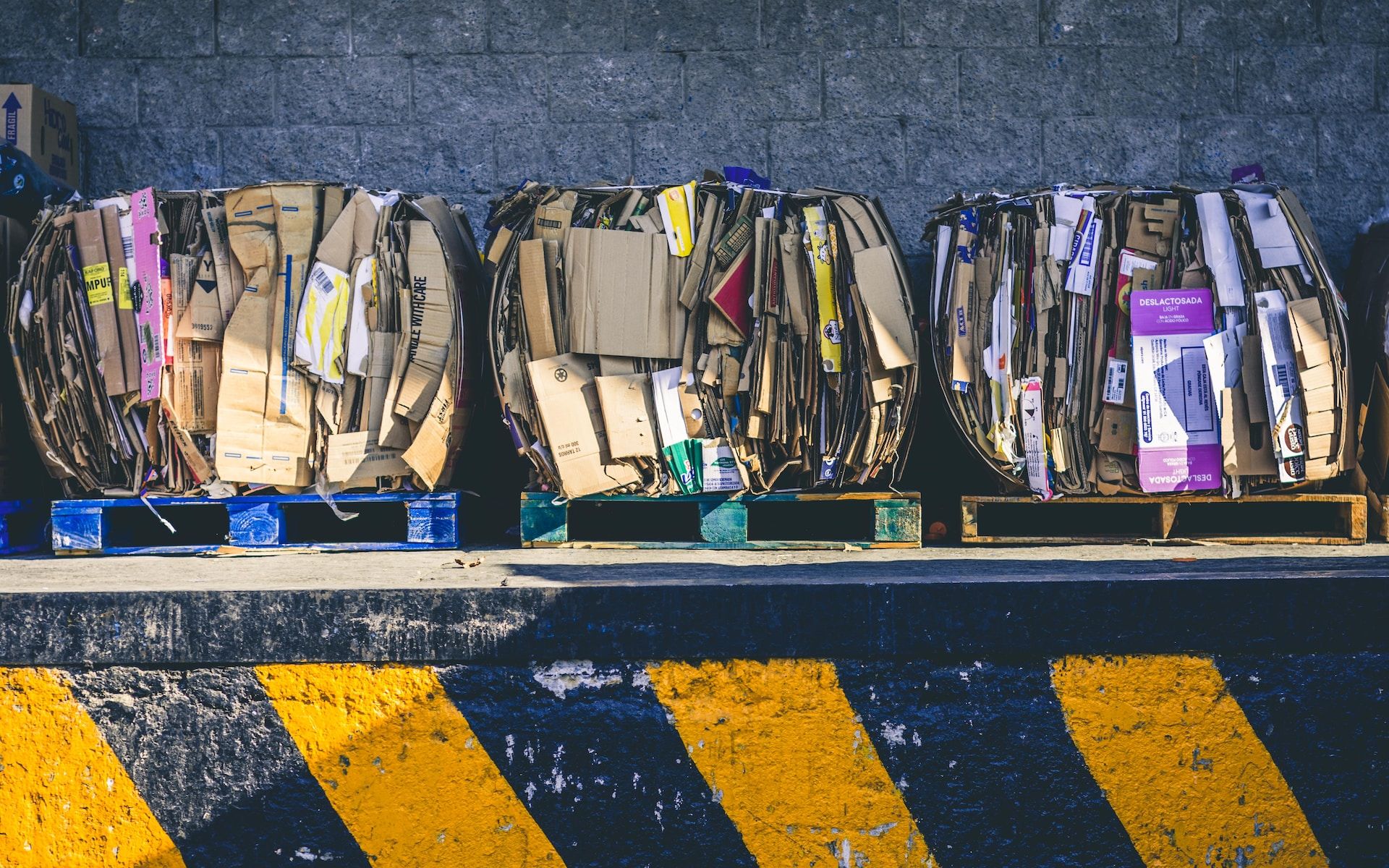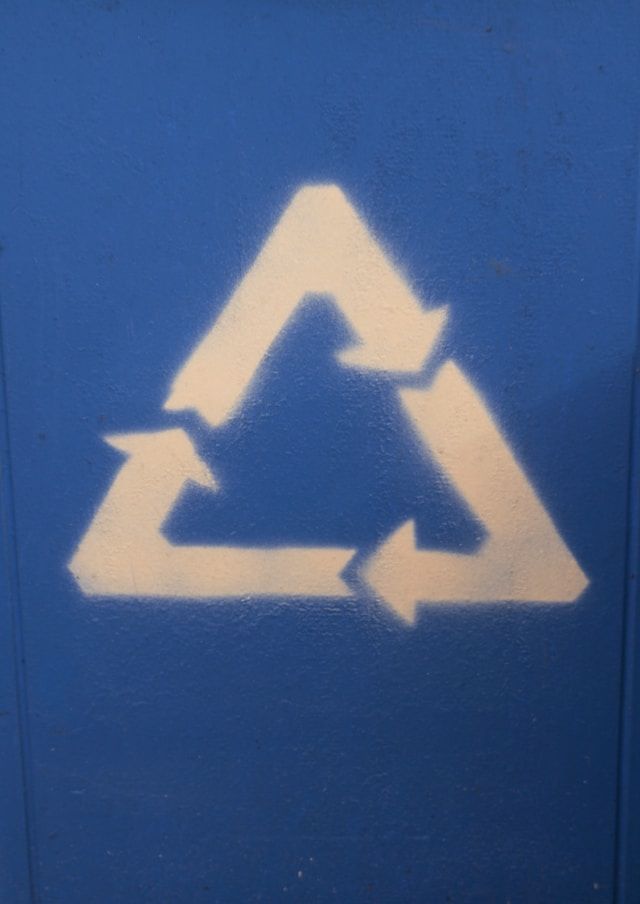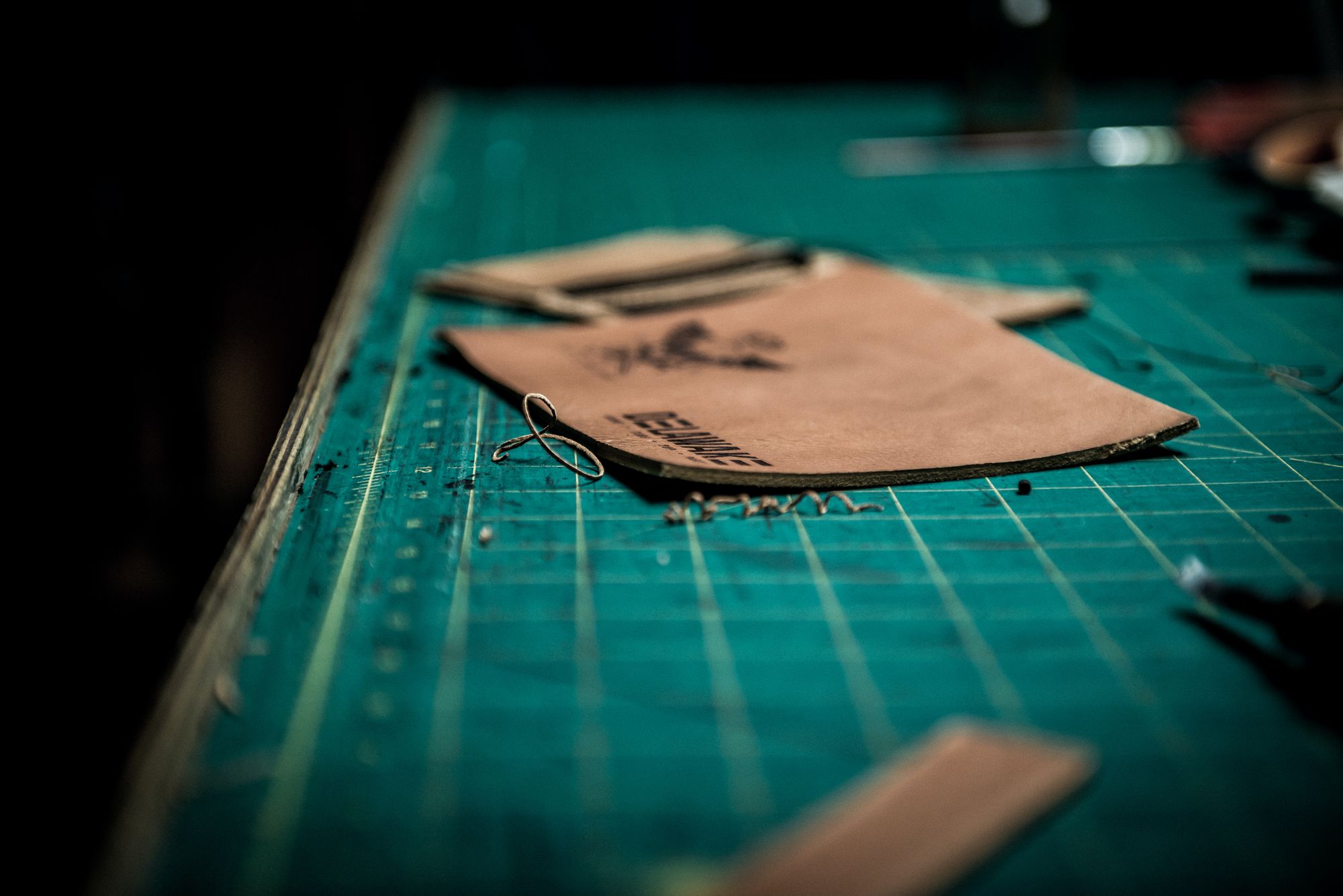Leather waste management is an increasingly important issue in today's society. The leather industry is a significant contributor to environmental pollution due to the waste generated during the production process.
The proper management of leather waste is crucial in reducing the environmental impact of the leather industry. This article aims to provide an overview of leather waste management practices.
By understanding the importance of leather waste management and the methods available to manage it, we can work towards a more sustainable and environmentally friendly leather industry.
Let’s take a look at the table of content below:
- Definition of Leather Waste
- Importance of Leather Waste Management
- Types of Leather Waste
- Environmental Impact of Leather Waste
- Leather Waste Management Practices
- Challenges of Leather Waste Management
- Solutions to Tackle Challenges of Leather Waste Management
- Wrapping Up
- How Deskera Can Assist You?
Let's get started!
Definition of Leather Waste
Leather waste refers to any discarded or surplus material that is produced during the manufacturing or processing of leather goods. This includes various types of waste such as solid leather scraps, liquid waste, and dust and trimmings.
Solid leather waste is the most common type of leather waste, and it includes scraps and cut-offs from the leather manufacturing process. These scraps can come in various sizes and shapes. And, they are often treated as waste since they cannot be used in the production of high-quality leather goods.

Liquid leather waste, on the other hand, refers to the wastewater generated during the leather manufacturing process. This wastewater further contains various chemicals and pollutants that can have harmful effects on the environment if not properly treated.
Dust and trimmings are another form of leather waste that is generated during the cutting and trimming of leather products. This waste is made up of small pieces of leather and dust that are produced during the cutting process.
Consequently, leather waste is a significant environmental issue due to its negative impact on the environment, including land, water, and air pollution. Proper management and disposal of leather waste are crucial to mitigate the environmental impact and promote sustainable practices in the leather industry.
Importance of Leather Waste Management
Leather waste management is an important practice that helps to reduce the environmental impact of the leather industry. The following are some of the key reasons why leather waste management is important:
- Environmental Protection: Leather waste can have negative impacts on the environment, including land, water, and air pollution. Proper management and disposal of leather waste can help to mitigate these impacts and protect the environment.
- Resource Conservation: The leather industry consumes a significant amount of resources, including water, energy, and raw materials. By managing leather waste properly, it is possible to conserve these resources and reduce the environmental footprint of the industry.
- Economic Benefits: Proper management of leather waste can also have economic benefits. For example, recycling and upcycling leather waste can create new products and generate revenue. Additionally, reducing waste can help to lower disposal costs and improve the efficiency of the leather manufacturing process.
- Reputation: As consumers become more environmentally conscious, companies that implement sustainable practices, including proper leather waste management, can improve their reputation and attract environmentally conscious customers.
- Regulatory Compliance: Many countries have regulations and laws regarding the disposal of waste. Proper leather waste management can help companies comply with these regulations and avoid fines or legal issues.
In summary, leather waste management is important for environmental protection, resource conservation, economic benefits, reputation, and regulatory compliance. By implementing sustainable practices, the leather industry can reduce its environmental impact and improve its long-term sustainability.
Types of Leather Waste
Leather waste can be categorized into three main types:
- Solid leather waste,
- Liquid leather waste, and
- Dust and trimmings.
Let’s discuss them in detail:
Solid Leather Waste
Solid leather waste refers to the leftover materials that are generated during the leather manufacturing process. This type of waste includes scraps, cut-offs, and excess material that cannot be used in the production of high-quality leather goods. Solid leather waste can be further classified into three main types:
- Leather shavings,
- Leather trimmings, and
- Leather dust.
Leather shavings are the larger pieces of solid leather waste that are generated during the splitting and cutting of leather hides. These shavings can come in various sizes and shapes, and they are often treated as waste since they cannot be used in the production of high-quality leather goods.
Leather trimmings are the smaller pieces of solid leather waste that are produced during the cutting and trimming of leather products. These trimmings can come in various shapes and sizes, and they are often treated as waste since they cannot be used in the production of high-quality leather goods.
Leather dust is the smallest form of solid leather waste and is produced during the grinding and sanding of leather products. This type of waste is made up of tiny particles of leather and can be harmful to the environment if not properly disposed of.
However, proper management of solid leather waste is important to reduce the environmental impact of the leather industry. One way to manage solid leather waste is to recycle or upcycle the waste material.
This can further involve turning the waste into new products such as furniture or fashion accessories. Alternatively, the waste can be used as fuel or as a source of energy through incineration.
Consequently, solid leather waste is a significant environmental issue that requires proper management to mitigate its impact. By implementing sustainable practices such as recycling and upcycling, the leather industry can reduce its environmental footprint and promote long-term sustainability.
Liquid Leather Waste
Liquid leather waste, also known as effluent, refers to the wastewater generated during the leather manufacturing process. This type of waste is produced during various stages of the leather manufacturing process, including soaking, liming, tanning, and dyeing.
The wastewater contains various chemicals and pollutants, including sulfides, chromium, and other heavy metals, as well as organic compounds such as proteins and fats.
Moreover, if not properly treated, liquid leather waste can have harmful effects on the environment, including water pollution, soil contamination, and air pollution. The chemicals and pollutants in the wastewater can also have harmful effects on human health and wildlife.
Proper management of liquid leather waste involves treatment and disposal in accordance with environmental regulations. Treatment methods can include physical, chemical, and biological processes.
Physical treatment involves the removal of solid particles and suspended matter, while chemical treatment involves the addition of chemicals to neutralize or precipitate contaminants. Biological treatment involves the use of microorganisms to break down organic matter.
Once the wastewater has been treated, it can be disposed of in various ways, including discharge into a municipal sewer system, discharge into a surface water body, or discharge into a land-based disposal system.
In addition to treatment and disposal, the leather industry can also take steps to reduce the amount of liquid leather waste generated during the manufacturing process. This can include the implementation of water-efficient technologies and the adoption of cleaner production practices.
In conclusion, liquid leather waste is a significant environmental issue that requires proper management to protect the environment and human health. Treatment and disposal in accordance with environmental regulations, as well as the implementation of water-efficient technologies and cleaner production practices, can help to mitigate the impact of liquid leather waste on the environment.
Dust and Trimmings
Dust and trimmings are another form of leather waste that is generated during the cutting and trimming of leather products. This type of waste is made up of small pieces of leather and dust that are produced during the cutting process.
Furthermore, dust and trimmings are often considered low-quality waste and are typically not suitable for use in the production of high-quality leather goods. Instead, they are usually disposed of in landfills, incinerators, or through other waste management methods.
However, there are sustainable alternatives to disposing of dust and trimmings. One approach is to upcycle the waste material into new products such as upholstery, clothing, and accessories. This can involve shredding the waste material and using it as a stuffing or filling for furniture, cushions, or insulation.
Another approach is to recycle the waste material. Recycling can involve grinding the waste material into a fine powder and using it as a filler in other products such as asphalt or rubber. It can also involve processing the waste material into new leather products through processes such as reconstituted leather or bonded leather.
However, proper management of dust and trimmings is essential to reduce the environmental impact of the leather industry.
In addition, recycling and upcycling can help to minimize waste and reduce the amount of material that ends up in landfills or incinerators. The adoption of sustainable practices such as these can promote a more circular economy and contribute to the overall sustainability of the leather industry.
In conclusion, dust and trimmings are a form of leather waste that requires proper management to minimize their environmental impact. By adopting sustainable practices such as recycling and upcycling, the leather industry can reduce waste and contribute to a more sustainable future.
Environmental Impact of Leather Waste
Leather waste has significant environmental impacts that can negatively affect the environment and human health. Improper disposal and management of this waste can lead to
- Land Pollution
- Water Pollution,
- Air Pollution, and other environmental problems.
Let’s learn them in detail:

Land Pollution
Land pollution refers to the degradation of the quality and health of the soil and land due to the introduction of harmful chemicals, waste, or other substances. This type of pollution can have a range of harmful effects on the environment, human health, and wildlife.
One of the main causes of land pollution is improper waste disposal. This can include the dumping of hazardous chemicals, industrial waste, and other harmful substances into the soil, which can contaminate the land and potentially harm the surrounding ecosystems.
Furthermore, land pollution can also occur as a result of agricultural practices, such as the use of fertilizers, pesticides, and herbicides, which can lead to soil contamination.
The effects of land pollution can be severe and long-lasting. Contaminated soil can impact the health of plants and animals, reducing biodiversity and harming food chains. It can also affect human health, as toxic chemicals can leach into groundwater or become airborne, leading to respiratory problems and other health issues.
To address land pollution, a range of measures can be taken, including reducing waste generation through recycling and waste reduction efforts. The use of safer and more sustainable farming practices can also help to reduce the impact of agricultural practices on the soil. Additionally, regulations and laws can be implemented to prevent illegal dumping and require responsible waste disposal practices.
Furthermore, remediation efforts can also be undertaken to address existing land pollution. This can include physical and chemical treatments, such as soil excavation and the addition of soil amendments, to remove or reduce the concentration of harmful contaminants.
Consequently, land pollution is a significant environmental issue that can have a range of harmful effects on the environment, human health, and wildlife. Reducing waste generation, promoting sustainable farming practices, implementing regulations and laws, and undertaking remediation efforts can help to mitigate the impact of land pollution and promote a more sustainable future.
Water Pollution
Water pollution refers to the contamination of water bodies, such as rivers, lakes, oceans, and groundwater, by harmful substances, pollutants, or waste. Water pollution can have a range of negative impacts on the environment, human health, and wildlife.
One of the main sources of water pollution is industrial activity. Many industries release harmful chemicals and pollutants into water bodies, including heavy metals, solvents, and toxic substances that can harm aquatic life and cause long-term damage to the ecosystem. Agricultural activities, such as the use of fertilizers and pesticides, can also contribute to water pollution.
In addition to industrial and agricultural activities, human activities, such as improper disposal of waste, can also contribute to water pollution. Furthermore, sewage and wastewater can contain harmful bacteria and chemicals that can contaminate water sources and pose a risk to human health.
The effects of water pollution can be severe and long-lasting. Contaminated water can harm aquatic life, reduce biodiversity, and affect the food chain. It can also have a direct impact on human health, as contaminated water can cause waterborne diseases and other health issues.
To address water pollution, a range of measures can be taken, including reducing waste generation, implementing regulations and laws to prevent industrial and agricultural pollution, and promoting sustainable water management practices. Technologies, such as wastewater treatment plants, can also be used to remove harmful substances from water before it is released into water bodies.
In conclusion, water pollution is a significant environmental issue that can have a range of negative impacts on the environment, human health, and wildlife. Reducing pollution from industrial and agricultural activities, promoting sustainable water management practices, and implementing regulations and laws can help to mitigate the impact of water pollution and promote a more sustainable future.
Air Pollution
Air pollution refers to the presence of harmful substances, pollutants, or particles in the air that can pose a risk to human health and the environment. These pollutants can come from a range of sources, including industrial activity, transportation, and energy production.
One of the main sources of air pollution is transportation. Cars, trucks, and other vehicles release harmful pollutants, such as nitrogen oxides, particulate matter, and carbon monoxide, into the air, which can contribute to respiratory problems, heart disease, and other health issues. Industrial activity, such as the burning of fossil fuels, can also release harmful pollutants into the air.
In addition to human activity, natural events, such as wildfires and volcanic eruptions, can also contribute to air pollution. Also, climate change can also exacerbate air pollution, as higher temperatures can increase the concentration of harmful pollutants in the air.
The effects of air pollution can be severe and long-lasting. Exposure to air pollution can increase the risk of respiratory problems, heart disease, and other health issues. It can also harm the environment, contributing to climate change and harming wildlife and ecosystems.
To address air pollution, a range of measures can be taken, including promoting sustainable transportation options, reducing energy consumption, and implementing regulations and laws to reduce industrial pollution. Technologies, such as air filters and pollution control devices, can also be used to reduce the concentration of harmful pollutants in the air.
In conclusion, air pollution is a serious environmental problem that may have a variety of detrimental effects on wildlife, the environment, and human health.
It is possible to lessen the effects of air pollution and encourage a more sustainable future through promoting sustainable energy and transportation habits, putting rules and laws into effect, and using technology to reduce pollution.
Leather Waste Management Practices
Leather waste management practices refer to the strategies and methods used to reduce, reuse, and recycle leather waste generated during the production of leather products.
Effective leather waste management practices aim to minimize waste generation, maximize reuse and recycling opportunities, and reduce the environmental impact of the leather industry.
In addition, these practices can include the use of sustainable production methods, the adoption of circular economy principles, and the implementation of effective waste management strategies. Let’s learn them in detail:
Reuse
Reuse refers to the practice of using a product or material again, either for its original purpose or for a new purpose, instead of disposing of it. Reuse is an essential component of sustainable waste management and can help to reduce the environmental impact of the leather industry.

1. Second-hand markets
Second-hand markets for leather products are a great way to promote the reuse of leather waste. Consumers can donate or sell their used leather products, such as jackets, shoes, and bags, to second-hand stores or online marketplaces. These products can then be sold to new owners who can continue to use them, extending their lifespan and reducing the amount of waste generated.
Second-hand markets offer several benefits.
- Firstly, they reduce the demand for new leather products, which can help to reduce the environmental impact of the leather industry.
- Secondly, they provide affordable options for consumers who may not be able to afford new leather products.
- Thirdly, they support local communities and charities, as many second-hand stores are operated by non-profit organizations.
There are several types of second-hand markets for leather products. Thrift stores are one option, offering a wide range of used clothing and accessories, including leather products.
These stores are often run by non-profit organizations and offer affordable prices. Online marketplaces, such as eBay and Poshmark, are another option, providing a platform for consumers to buy and sell used leather products.
Consignment shops are another type of second-hand market for leather products. These shops allow consumers to sell their used leather products on consignment, with the store taking a commission on the sale. This can be a good option for consumers who are looking to make some extra money while also reducing their environmental impact.
In conclusion, second-hand markets are an important strategy for promoting the reuse of leather waste. By providing affordable options for consumers and reducing the demand for new leather products, second-hand markets can help to minimize waste and support sustainable practices.
2. Upcycling
Upcycling is a process of transforming waste materials into new products of higher value or quality. In the case of leather waste, upcycling involves using scraps or offcuts to create new products or repurposing larger pieces of leather waste into new applications.
Furthermore, upcycling is an important strategy for reducing the environmental impact of the leather industry, as it helps to minimize waste while creating new value from existing materials.
There are several ways that leather waste can be upcycled. One common method is to turn scraps or offcuts into new products, such as wallets, keychains, or jewelry. These products can be sold to consumers who are looking for unique, sustainable products. This process often requires creativity and craftsmanship to turn small pieces of leather into functional and aesthetically pleasing products.
Another way to upcycle leather waste is by repurposing larger pieces of waste into new applications. For example, some companies use leather waste to make insulation or acoustic panels for buildings, while others use it to make composite materials for furniture or automotive parts.
This further requires more advanced processing techniques, such as shredding or pulverizing the leather waste, and combining it with other materials to create new products.
There are several benefits of upcycling leather waste.
- Firstly, it helps to reduce the amount of waste generated by the leather industry, which can have significant environmental impacts.
- Secondly, it can create new value from existing materials, reducing the need for new materials and minimizing the environmental impact of resource extraction.
- Finally, upcycling can result in unique, sustainable products that appeal to consumers who are looking for environmentally friendly alternatives.
In conclusion, upcycling is an important strategy for reducing the environmental impact of the leather industry. By transforming leather waste into new products or repurposing it into new applications, companies can minimize waste, create new value, and reduce their environmental impact.
Upcycling requires creativity, craftsmanship, and advanced processing techniques, but it can result in unique and sustainable products that appeal to consumers who are looking for environmentally friendly options.
Recycling
Recycling is another important strategy for managing leather waste. Recycling involves breaking down waste materials into their raw materials and using them to create new products.
In the case of leather waste, recycling typically involves shredding or pulverizing the leather and using it to make new products, such as upholstery, flooring, or accessories.
There are several benefits of recycling leather waste.
- Firstly, it reduces the amount of waste generated by the leather industry, which can have significant environmental impacts.
- Secondly, it can reduce the need for new materials and minimize the environmental impact of resource extraction.
- Thirdly, recycling can result in high-quality products that are often less expensive than new products made from virgin materials.
However, there are also some challenges associated with recycling leather waste. One of the biggest challenges is the presence of non-biodegradable materials, such as synthetic dyes or treatments, that can be difficult to remove during the recycling process. These materials can reduce the quality of the recycled product or limit its potential applications.
Another challenge is the relatively low demand for recycled leather products compared to virgin materials, which can limit the market for recycled products.
Despite these challenges, there are several companies and organizations that are working to increase the recycling of leather waste. Some companies use innovative processing techniques, such as chemical or thermal treatments, to remove non-biodegradable materials and improve the quality of the recycled product.
Others are working to increase awareness and demand for recycled leather products, by promoting their environmental benefits and affordability.
Following, we’ve discussed two types of recycling. Let’s check out:
1. Mechanical Recycling
Mechanical recycling is a common method for recycling leather waste. It involves breaking down leather waste into small pieces, such as fibers or particles, and using them to create new products. The process of mechanical recycling typically involves several stages, including collection, sorting, cleaning, and processing.
The first stage of mechanical recycling is collection. Leather waste can come from a variety of sources, including manufacturing scrap, end-of-life products, and post-consumer waste. The waste is collected and sorted based on its composition, size, and quality. For example, some waste may be too contaminated or damaged to be used for recycling.
The second stage is cleaning. Leather waste often contains dirt, grease, or other contaminants that must be removed before it can be recycled. The waste is washed or cleaned to remove these contaminants and improve the quality of the recycled material.
The third stage is processing. This involves breaking down the leather waste into small pieces, such as fibers or particles. The waste is typically shredded or pulverized using specialized equipment. The resulting material can be used to create a variety of products, such as upholstery, flooring, or accessories.
There are several benefits of mechanical recycling:
- Firstly, it reduces the amount of waste generated by the leather industry, which can have significant environmental impacts.
- Secondly, it can reduce the need for new materials and minimize the environmental impact of resource extraction.
- Thirdly, it can result in high-quality products that are often less expensive than new products made from virgin materials.
However, there are also some limitations to mechanical recycling. One of the biggest challenges is the presence of non-biodegradable materials, such as synthetic dyes or treatments, that can be difficult to remove during the recycling process. These materials can reduce the quality of the recycled product or limit its potential applications.
Another challenge is the relatively low demand for recycled leather products compared to virgin materials, which can limit the market for recycled products.
In conclusion, mechanical recycling is an important strategy for managing leather waste. By breaking down waste materials and using them to create new products, companies can minimize waste, reduce their environmental impact, and create new value from existing materials.
However, there are also some challenges associated with mechanical recycling, such as the presence of non-biodegradable materials and limited demand for recycled products.
Nonetheless, with continued innovation and awareness, mechanical recycling can play an important role in promoting sustainable practices in the leather industry.
2. Chemical Recycling
Chemical recycling is another method for recycling leather waste. It involves breaking down the leather waste chemically to its constituent components, which can then be used to create new products. This method is particularly useful for dealing with contaminated or complex leather waste, which may not be suitable for mechanical recycling.
The process of chemical recycling typically involves several stages. The first stage is the collection and sorting of the leather waste. This waste is then processed to remove any metal parts, buttons, or zippers, and any other non-leather materials.
The second stage is the chemical treatment of the leather waste. This treatment typically involves the use of solvents, acids, or enzymes to break down the leather waste into its constituent components. These components may include proteins, fats, and other organic materials.
The third stage involves the purification of the extracted components. This purification process involves separating the individual components from one another and removing any contaminants or impurities.
The purified components can then be used to create new products. For example, the extracted proteins can be used as a raw material for the production of biofuels or fertilizers. The extracted fats can be used as a raw material for the production of soap or biodiesel. The extracted organic materials can be used as a source of energy or as a raw material for the production of chemicals.
There are several benefits of chemical recycling.
- Firstly, it allows for the recycling of complex and contaminated leather waste, which may not be suitable for mechanical recycling.
- Secondly, it can result in high-quality products that can be used in a variety of applications.
- Thirdly, it can reduce the need for virgin materials and minimize the environmental impact of resource extraction.
However, there are also some challenges associated with chemical recycling. One of the biggest challenges is the cost of the process, which can be relatively high compared to mechanical recycling.
Another challenge is the potential for toxic or hazardous chemicals to be released during the chemical treatment process, which can pose a risk to human health and the environment. There is also a need for further research to improve the efficiency and effectiveness of the chemical recycling process.
In conclusion, chemical recycling is an important strategy for managing leather waste. By breaking down waste materials chemically and using them to create new products, companies can minimize waste, reduce their environmental impact, and create new value from existing materials.
However, there are also some challenges associated with chemical recycling, such as the cost of the process and the potential for toxic chemicals to be released.
Nonetheless, with continued innovation and research, chemical recycling can play an important role in promoting sustainable practices in the leather industry.
Landfill
Landfilling is a commonly used method for disposing of leather waste that cannot be recycled or reused. In this method, the waste is transported to a designated landfill site and deposited in designated areas. The waste is then covered with soil, which helps to reduce odors and prevent the waste from being blown away by the wind.
While landfilling is a convenient and relatively low-cost method for disposing of leather waste, it can have significant negative impacts on the environment. One of the most significant impacts of landfilling is the production of methane gas, which is a potent greenhouse gas that contributes to climate change. As the waste decomposes, it releases methane into the atmosphere, which can have significant environmental consequences.
Landfills can also impact local ecosystems and human health. The waste deposited in landfills can release pollutants and chemicals into the soil and water, which can contaminate local ecosystems and harm wildlife. The waste can also attract pests and vermin, which can pose a risk to human health and contribute to the spread of disease.
To mitigate these negative impacts, modern landfills are designed with advanced technologies and management practices. For example, landfill operators use liners to prevent the migration of waste and leachate (liquid waste) into the surrounding environment. They also use gas collection systems to capture methane and other gases that are produced by the decomposition of the waste.
However, despite these advances, landfilling remains a less desirable option for managing leather waste compared to recycling or reuse. As such, efforts should be made to minimize the amount of leather waste that is sent to landfills by promoting sustainable practices, such as reducing waste at the source, recycling, and promoting the use of sustainable materials in the leather industry.
Incineration
Incineration is a method of disposing of leather waste that involves burning the waste at high temperatures. This process produces heat, which can be used to generate electricity or steam.
One of the advantages of incineration is that it can help to reduce the volume of waste that is sent to landfills. This can help to alleviate the pressure on landfill sites and reduce the amount of methane gas that is produced by decomposing waste. Incineration can also generate energy, which can be used to power homes and businesses.
However, incineration can have significant environmental and health impacts. The burning of leather waste can release harmful pollutants, such as carbon monoxide, nitrogen oxides, and sulfur dioxide, into the air. These pollutants can contribute to respiratory problems, heart disease, and other health issues.
Additionally, incineration can produce ash, which contains toxic metals and chemicals that can contaminate the environment. If not managed properly, this ash can pose a significant risk to human health and the environment.
As such, incineration should only be considered as a last resort for managing leather waste, after all other options for recycling and reuse have been exhausted.
Additionally, strict regulations and monitoring should be in place to ensure that the emissions from incinerators are within acceptable levels and that the ash produced is managed safely.
Challenges of Leather Waste Management
Despite the various waste management practices available for leather waste, there are several challenges that hinder effective management.
Let’s thoroughly discuss them:
Economic Challenges
Leather waste management poses various economic challenges that make it difficult to implement effective waste management practices. These challenges include high costs, lack of financial incentives, and limited market demand for recycled leather products.
One of the primary economic challenges of leather waste management is the high costs associated with processing and disposing of the waste. Recycling and upcycling technologies are often expensive and require specialized equipment and expertise, making them less accessible to small businesses and low-income communities.
In addition, there may be a lack of financial incentives for waste management authorities or businesses to invest in sustainable waste management practices. Governments and private organizations may be hesitant to invest in these practices, as they may not see a direct return on their investment or may prioritize other economic priorities.
Furthermore, there may be limited market demand for recycled leather products, which can make it challenging to establish a viable recycling industry. Without a sufficient market demand, businesses may not see the value in investing in the technology and infrastructure needed for recycling and upcycling.
To address these economic challenges, there needs to be a shift towards a circular economy approach to waste management. This approach prioritizes reducing waste at the source, designing products for reuse and recyclability, and promoting the use of recycled materials.
Furthermore, governments can provide financial incentives, such as tax breaks or subsidies, to encourage businesses to invest in sustainable waste management practices. Additionally, consumers can drive demand for recycled leather products by choosing to purchase environmentally friendly and sustainably produced goods.
Technical Challenges
Leather waste management poses various technical challenges that make it difficult to implement effective waste management practices. These challenges include the complexity of the leather waste composition, difficulty in separating different types of leather waste, and limited technologies for processing certain types of leather waste.
One of the primary technical challenges of leather waste management is the complexity of the composition of leather waste. Leather waste is a heterogeneous mixture of organic and inorganic materials, including proteins, fats, oils, and dyes. This complexity can make it difficult to process the waste effectively and can require specialized technologies and expertise.
Another technical challenge is the difficulty in separating different types of leather waste. Solid waste, liquid waste, and dust and trimmings all require different processing techniques and technologies. It can be challenging to separate these waste streams effectively and efficiently, leading to increased costs and decreased effectiveness.
Finally, there may be limited technologies available for processing certain types of leather waste. For example, liquid waste can contain high levels of pollutants and can be difficult to treat and process efficiently. There may also be limited options for processing certain types of solid waste or for upcycling leather waste into new products.
To address these technical challenges, there needs to be continued investment in research and development of new technologies and processes for leather waste management. This includes developing new techniques for separating and processing different types of leather waste, as well as finding new uses for recycled leather products.
Additionally, there should be more collaboration between industry stakeholders, waste management authorities, and researchers to promote the development and implementation of new technologies and processes.
Regulatory Challenges
Leather waste management also faces various regulatory challenges that make it difficult to implement effective waste management practices. These challenges include a lack of clear regulations, inconsistent enforcement of existing regulations, and limited international coordination.
One of the primary regulatory challenges of leather waste management is a lack of clear regulations. Regulations regarding leather waste management vary widely between countries and can be inconsistent even within the same jurisdiction.
This further can create confusion for businesses and waste management authorities regarding the best practices for managing leather waste.

Another regulatory challenge is inconsistent enforcement of existing regulations. Even when regulations exist, they may not be enforced consistently or may not have significant penalties for non-compliance. This can lead to non-compliance and a lack of accountability for businesses and waste management authorities.
Finally, there may be limited international coordination regarding leather waste management. The global nature of the leather industry means that waste is often generated and managed in one country while products are sold and consumed in another. Without international coordination and cooperation, it can be difficult to establish consistent regulations and best practices for managing leather waste.
To address these regulatory challenges, there needs to be increased international coordination and cooperation regarding leather waste management. This can include establishing international guidelines and standards for waste management practices, as well as promoting the development of consistent regulations and enforcement mechanisms.
Additionally, there should be greater collaboration between industry stakeholders, governments, and waste management authorities to promote the development and implementation of effective waste management practices.
Solutions to Tackle Challenges of Leather Waste Management
To overcome the challenges facing leather waste management, various solutions can be implemented. These solutions include:
- Developing clear regulations: Governments and waste management authorities should work together to establish clear and consistent regulations for leather waste management. These regulations should specify best practices for waste reduction, reuse, recycling, and disposal.
- Improving enforcement: Governments and waste management authorities should enforce existing regulations more consistently and establish significant penalties for non-compliance. This will promote accountability and encourage businesses to adopt better waste management practices.
- Investing in research and development: Research institutions, industry stakeholders, and waste management authorities should collaborate to develop new technologies and processes for leather waste management. This includes developing new methods for separating and processing different types of leather waste, as well as finding new uses for recycled leather products.
- Promoting international coordination: Governments, industry stakeholders, and waste management authorities should work together to promote international coordination and cooperation regarding leather waste management. This can include establishing international guidelines and standards for waste management practices, as well as promoting the development of consistent regulations and enforcement mechanisms.
- Increasing public awareness: The general public should be made aware of the environmental impact of leather waste and the importance of proper waste management practices. This can be done through public education campaigns and awareness-raising initiatives.
Overall, a multi-faceted approach is needed to address the challenges facing leather waste management. By promoting regulatory consistency, investing in research and development, and increasing public awareness, we can work towards more effective and sustainable leather waste management practices.
Wrapping Up
In conclusion, proper leather waste management is critical to reduce the environmental impact of the leather industry. Leather waste can cause significant pollution if not managed properly, including land, water, and air pollution.
The main types of leather waste include solid waste, liquid waste, dust, and trimmings. While leather waste management faces various challenges such as economic, technical, and regulatory challenges, there are various solutions to overcome them, including developing clear regulations, improving enforcement, investing in research and development, promoting international coordination, and increasing public awareness.
Methods of leather waste management include reuse, recycling, landfill, and incineration. The reuse and recycling of leather waste are the most sustainable options, with upcycling and chemical recycling being innovative methods to reduce waste.
By implementing these solutions and methods, we can work towards more effective and sustainable leather waste management practices, reducing the environmental impact of the leather industry while promoting sustainability.
How Deskera Can Assist You?
Deskera's integrated financial planning tools allow investors to better plan their investments and track their progress. It can help investors make decisions faster and more accurately.
Deskera Books enables you to manage your accounts and finances more effectively. Maintain sound accounting practices by automating accounting operations such as billing, invoicing, and payment processing.

Deskera CRM is a strong solution that manages your sales and assists you in closing agreements quickly. It not only allows you to do critical duties such as lead generation via email, but it also provides you with a comprehensive view of your sales funnel.
Deskera People is a simple tool for taking control of your human resource management functions. The technology not only speeds up payroll processing but also allows you to manage all other activities such as overtime, benefits, bonuses, training programs, and much more. This is your chance to grow your business, increase earnings, and improve the efficiency of the entire production process.
Final Takeaways
We've arrived at the last section of this guide. Let's have a look at some of the most important points to remember:
- Leather waste is a significant environmental issue due to its negative impact on the environment, including land, water, and air pollution. Proper management and disposal of leather waste are crucial to mitigate the environmental impact and promote sustainable practices in the leather industry.
- Solid leather waste refers to the leftover materials that are generated during the leather manufacturing process. This type of waste includes scraps, cut-offs, and excess material that cannot be used in the production of high-quality leather goods.
- Liquid leather waste, also known as effluent, refers to the wastewater generated during the leather manufacturing process. This type of waste is produced during various stages of the leather manufacturing process, including soaking, liming, tanning, and dyeing.
- Recycling can involve grinding the waste material into a fine powder and using it as a filler in other products such as asphalt or rubber. It can also involve processing the waste material into new leather products through processes such as reconstituted leather or bonded leather.
- To address land pollution, a range of measures can be taken, including reducing waste generation through recycling and waste reduction efforts. The use of safer and more sustainable farming practices can also help to reduce the impact of agricultural practices on the soil.
- The effects of air pollution can be severe and long-lasting. Exposure to air pollution can increase the risk of respiratory problems, heart disease, and other health issues. It can also harm the environment, contributing to climate change and harming wildlife and ecosystems.
- Reuse refers to the practice of using a product or material again, either for its original purpose or for a new purpose, instead of disposing of it. Reuse is an essential component of sustainable waste management and can help to reduce the environmental impact of the leather industry.
Related Articles












